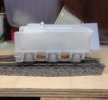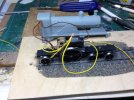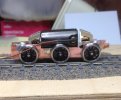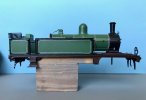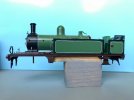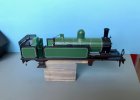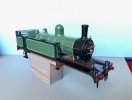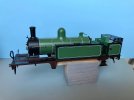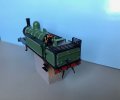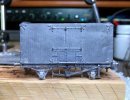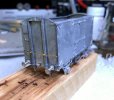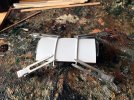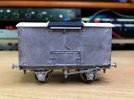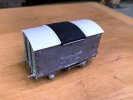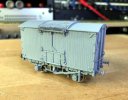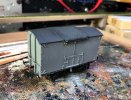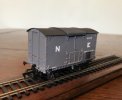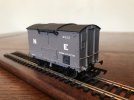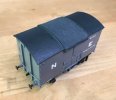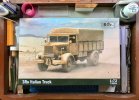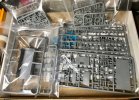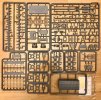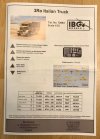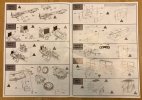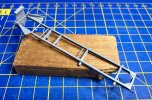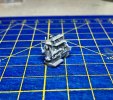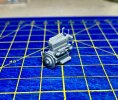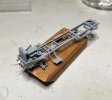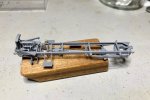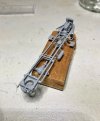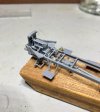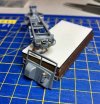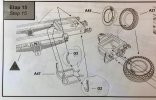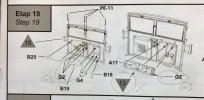Progress on the IBG Lancia 3Ro has been slow but steady and the chassis now has more detail added to it:
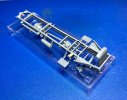
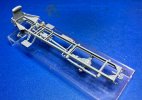
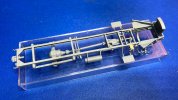
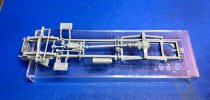
It's a
far more detailed kit than any plastic vehicle I've built before, though I realise that may of course say more about the plastic kits I've built in the past: this is more like an etched brass kit in detail terms! When I built Airfix kits in my youth, I thought they were very detailed; then, when I built and converted a few in recent years, I was a little disappointed at the level of detail as I'd spent the previous few years building etched brass railway kits from companies like D&S and LRM and my standards had been raised. Likewise plastic railway kits from the likes of Parkside Dundas: great starting points but for something really detailed, you need to add quite a lot for yourself. No need of that here!!
And speaking of etched brass, this kit is in fact a mixed media one (I think that's the right term?) as it has a small etch too:
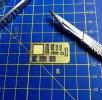
I've only used one part from the etch so far - the one you see detached in the picture above: here's a shot of it in place:
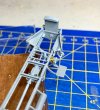
(
Hm: looks like that might be a moulding line on the tank that in the out of focus foreground of that pic: I must check that...).
I've also found a couple of minor errors in the instructions, which I'll detail here in case they're helpful to anyone else building this kit, not in order to complain or criticise. I think this is a superbly designed and detailed kit which must have taken a huge amount of work to manufacture - the occasional typo is perfectly understandable!
The first error is that two parts are identified as A16 and - obviously - only one is correct:
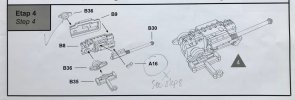
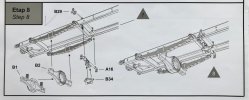
A16 is in fact the cross-bar type piece shown in Step 8, the second of the two preceding photos, not the very small item in Step 4 (that I believe to be an oil or filler tube). Because I decided to start with the chassis I'd found and used the Step 8 one before realising I was looking for another A16 - I haven't yet located it and if I establish that it's not there I'll fabricate one.
The second error is a simple typo - the part marked B39 in Step 10 should be marked A39 and it is present on the 'A' sprue:
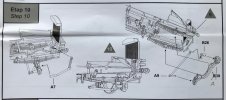
I've also found a lot of excellent photos of the civilian version of the 3Ro (factory code 464, the military one being 564) on this site:
https://tanks-encyclopedia.com/lancia-3ro/, as well as a large amount of information about the production history of the vehicles, including details such as different cab sizes, modifications, cargo bay differences and so forth, so I'm fairly confident I can turn this into a reasonable convincing civvie truck. I've also decided to go with the engine in the kit, as it'll be under the bonnet, even if I make the bonnet removable! There was a certain amount of cross-fertilisation between military and civilian vehicles at various times, so it's not totally beyond possibility that a civilian truck might have had a diesel engine...
In terms of paint colours, I need to do some more research as all the photos of the 3Ro on that sight are B&W: several of the photos show very attractive two tone colour schemes however and it's clear that one colour is considerable darker than the other (the darker one is usually used for decorative areas or highlighting) but I'm not sure what colours they would have been. I know pre-war British commerical vehicles sported quite a wide range of very bright colours - grass green, pillar-box red, navy, primrose - so is it fair to assume that same was true on the continent?


